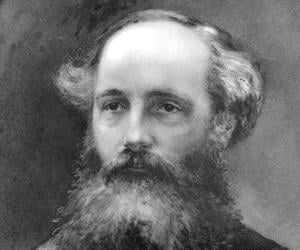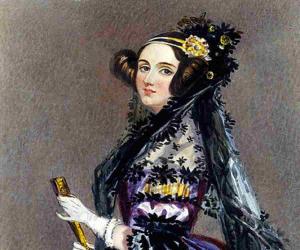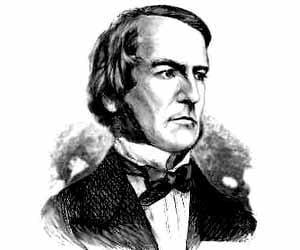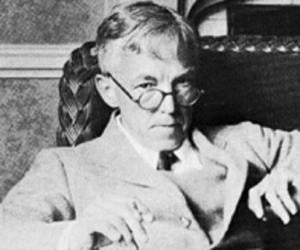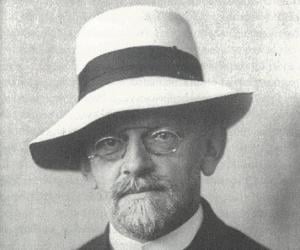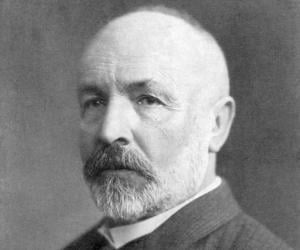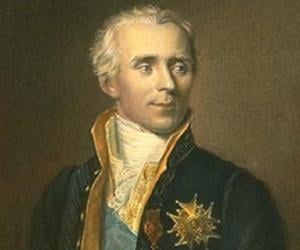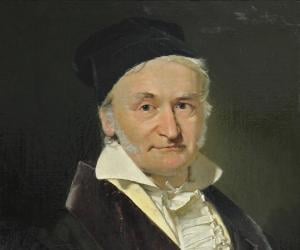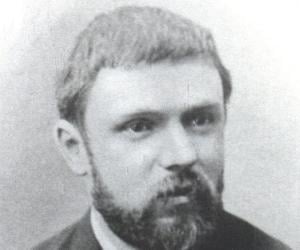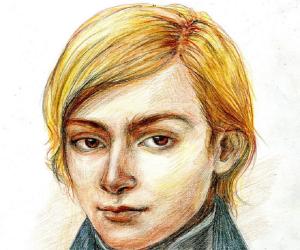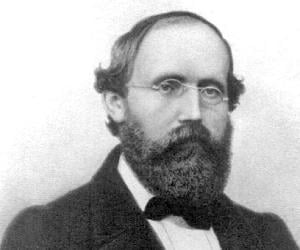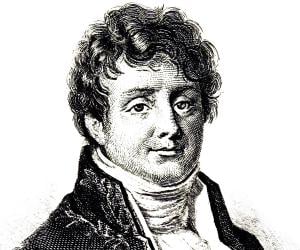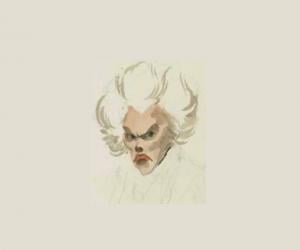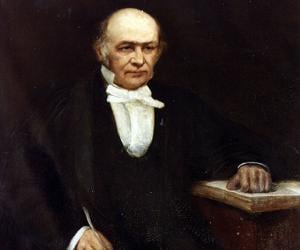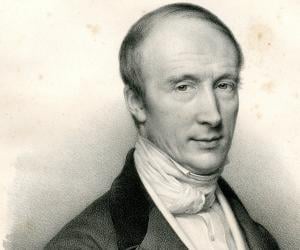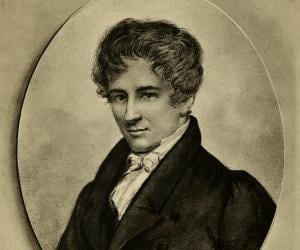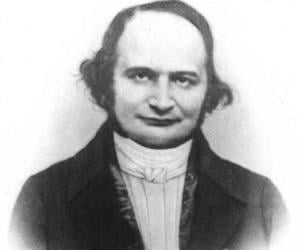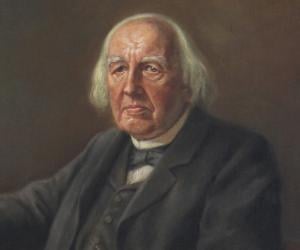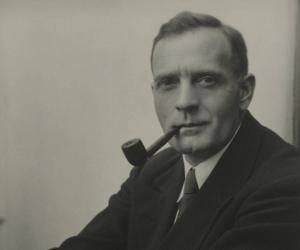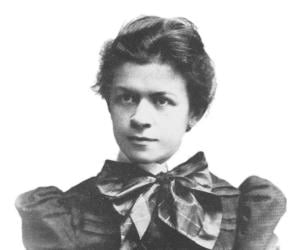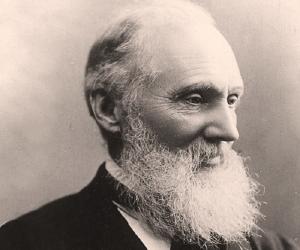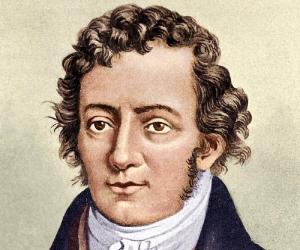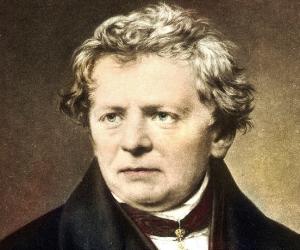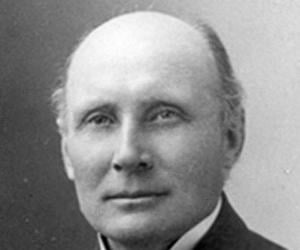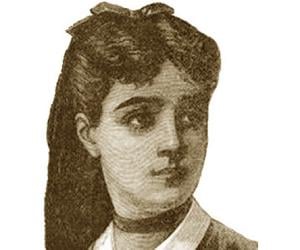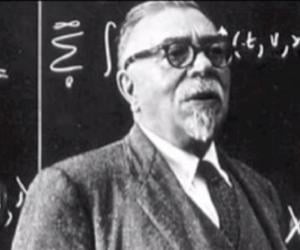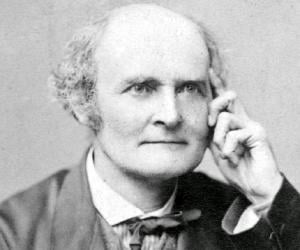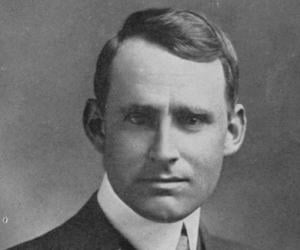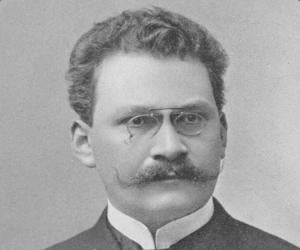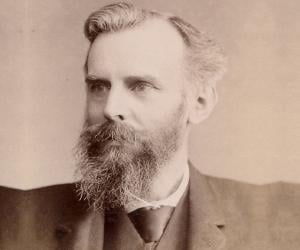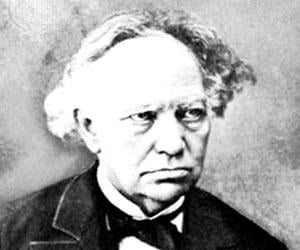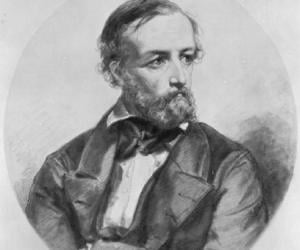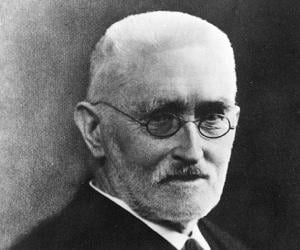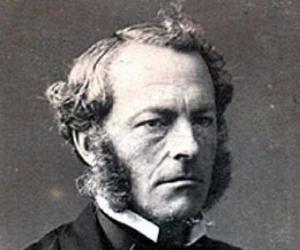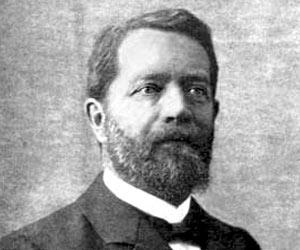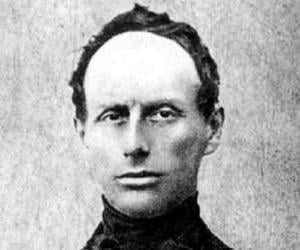Scottish physicist James Maxwell’s contributions included the formulation of the classical theory of electromagnetic radiation and the production of the first light-fast color photograph. His Maxwell–Boltzmann distribution explored the kinetic theory of gases. He has also written poems and was an Elder of the Church of Scotland.
Ada Lovelace was a mathematician known for her work on the Analytical Engine, a mechanical general-purpose computer proposed by Charles Babbage. Many believe that Lovelace was the first to recognize the potential of computers. It is also believed that she published the first algorithm after realizing that the algorithm could be carried out by a machine like the Analytical Engine.
George Boole is remembered for pioneering Boolean algebra, a tool used in digital computer circuits. More of a self-taught mathematician, Boole began teaching at 16 and later grew up to be a math professor at Queen’s College, Cork. His work in differential equations and algebraic logic was groundbreaking.
English mathematician G. H. Hardy is best recognised for his work and achievements in number theory and mathematical analysis, and also as mentor of distinguished Indian mathematician Srinivasa Ramanujan. He is noted for his essay on mathematics titled A Mathematician's Apology. He also made his mark in biology formulating a basic principle of population genetics called Hardy–Weinberg principle.
German mathematician David Hilbert was first drawn to math inspired by his mother, who was a budding math enthusiast. He contributed to a host of concepts, theories, and postulates, such as Hilbert space, Hilbert's program, and Hilbert's problems. He died in oblivion, with a handful of people at his funeral.
Though French scholar Pierre-Simon Laplace is primarily known for his work on the solar system, his research extended to areas such as mathematics and physics, apart from astronomy. Widely known as the Newton of France, he escaped being executed during the French Revolution, owing to his lack of political views.
German mathematician and physicist Carl Friedrich Gauss is remembered for his work in math and science. Known as the Princeps mathematicorum, he laid down tenets such as the Gauss's Law. He had exhibited his talent since an early age and had completed writing Disquisitiones Arithmeticae by 21.
Évariste Galois was a French mathematician best remembered for solving a 350-year-old problem when he was still in his teens. His work formed the basis for group theory and Galois theory, two important branches of abstract algebra. Also a political activist, Évariste Galois died at the age of 20 after suffering wounds in a duel.
Bernhard Riemann was a German mathematician best remembered for his contributions to number theory, analysis, and differential geometry. His paper on the prime-counting function, which was published in 1859, is considered one of the most influential papers in the history of analytic number theory. Riemann is widely regarded as one of the greatest mathematicians ever.
Joseph Fourier was a French physicist and mathematician best remembered for commencing the investigation of the Fourier series, which is used widely to solve problems of heat transfer and vibrations. Fourier's law of conduction and Fourier transform are named in his honor. Fourier is also said to have discovered the greenhouse effect.
Born into an affluent family, French mathematician Adrien-Marie Legendre probably never had to earn a living till the beginning of the French Revolution. Excelling in math and physics, he later contributed to areas such as elliptic functions, developed the least squares method, and lent his name to Legendre polynomials.
Son of a Dublin solicitor, Sir William Rowan Hamilton was raised and educated by his priest uncle from age 3. Initially a master of languages such as Latin, Greek, and Persian, Hamilton began deviating to math at 16. He is remembered for his contribution to optics, Hamiltonian mechanics, and algebra.
French mathematician Augustin-Louis Cauchy was initially a military engineer. In his early days, he and his family escaped the Reign of Terror and settled in Arcueil. He was one of the pioneers of mathematical analysis and made significant contributions to subjects such as error theory, calculus, and complex functions.
Born to a pastor, Norwegian mathematician Niels Henrik Abel first showcased his mathematical skills in his cathedral school and later became a pioneer of various mathematical concepts. He died of tuberculosis, amid poverty, before he could learn that he had been appointed to teach at the University of Berlin.
Carl Gustav Jacob Jacobi was a German mathematician best remembered for his contributions to differential equations, dynamics, number theory, determinants, and elliptic functions. He is the first Jewish mathematician to work as a professor at a German university. Jacobi has a crater on the Moon named after him in recognition of his contribution to science.
Karl Weierstrass was a German mathematician best remembered for his significant contributions to mathematics. Often referred to as the father of modern analysis, Weierstrass proved the Bolzano-Weierstrass theorem and the intermediate value theorem. He also authorized the definition of continuous function. The asteroid 14100 Weierstrass and the lunar crater Weierstrass are named after him.
While the Hubble Telescope, named after Edwin Powell Hubble, reminds one of his contribution to astronomy, he failed to get a Nobel Prize, as back in his time, the Nobel Committee didn’t recognize astrophysics as a valid science. He is best remembered for his work on galaxies and extragalactic astronomy.
Lord Kelvin was a British mathematical physicist and engineer. He studied at the Glasgow University and proceeded to teach there as well. Besides his academic career, he also had a career as an electric telegraph engineer and inventor. He received the Royal Society's Copley Medal in 1883. Absolute temperatures are stated in units of kelvin in his honor.
Andre Marie Ampere was a French physicist and mathematician. He is best known for being one of the founders of the science of classical electromagnetism. He was a professor at the École Polytechnique and the Collège de France and a member of the French Academy of Sciences. The base SI unit of electric current, the ampere, is named after him.
Georg Ohm was a German mathematician and physicist. He is credited with discovering the proportionality between the voltage applied through a conductor and the subsequent electric current, which came to be known as Ohm's law. His work earned him the prestigious Copley Medal in 1841. A prolific writer, Georg Ohm published several papers and pamphlets throughout his career.
Alfred North Whitehead was a British mathematician and philosopher, best known for his collaboration with his student Bertrand Russell on Principal of Mathematics, a three-volume work on the foundations of mathematics. Also known for his pioneering works on process philosophy and metaphysics, he is credited with developing a comprehensive metaphysical system that differs from most Western philosophies.
French mathematician Sophie Germain had used the pseudonym M. Le Blanc to get hold of notes from the École Polytechnique, as being a woman, she was not allowed to attend the institute. She later contributed to the number theory and also pioneered the elasticity theory. She died of breast cancer.
Arthur Eddington was an English physicist, astronomer, and mathematician. He wrote numerous articles that explained Albert Einstein's theory of general relativity to the English-speaking world. He began his career in academics and eventually shifted to astronomy, becoming the chief assistant to the Astronomer Royal at the Royal Greenwich Observatory. He was a recipient of the Henry Draper Medal.
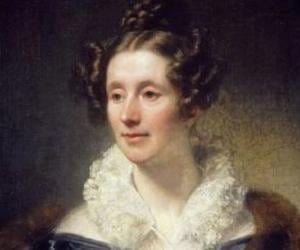
One of the two pioneering female honorary members of the Royal Astronomical Society, Mary Somerville was a 19th-century polymath and science writer. Though she specialized in math and astronomy, she was also well-versed in botany and geology. The Connection of the Physical Sciences remains her most notable work.
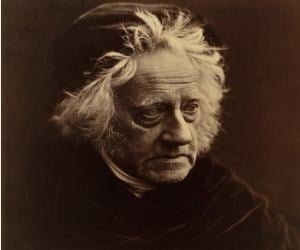
The son of renowned astronomer William Herschel, John Herschel was educated at Eton and Cambridge and grew up to be a polymath. Apart from contributing to the field of photography, he was known for cataloguing and naming stars and satellites. He briefly also served as the Master of the Royal Mint.
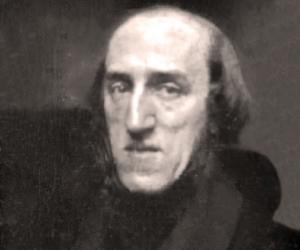
Belgian physicist and mathematician Joseph Plateau was a pioneer of the modern animation and movie industry, as he invented the phenakistiscope, the world’s first device to create an illusion of motion through images. He also laid down the structure of soap films through Plateau's laws.
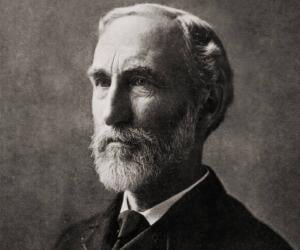
Josiah Willard Gibbs was an American scientist best remembered for making major theoretical contributions to mathematics, physics, and chemistry. As a mathematician, Gibbs is credited with inventing modern vector calculus. In 1901, he was honored with the prestigious Copley Medal for his contributions. Josiah Willard Gibbs's work had a major influence on physicists like J. D. van der Waals.
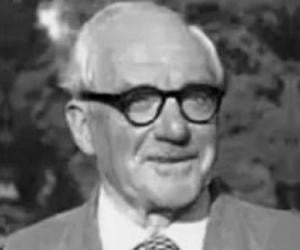
Hermann Minkowski was a mathematician who served as a professor at the University of Göttingen, the University of Königsberg, and the University of Zurich. He is credited with creating and developing the geometry of numbers. He is also credited with using geometrical methods to resolve problems in the theory of relativity, mathematical physics, and number theory.
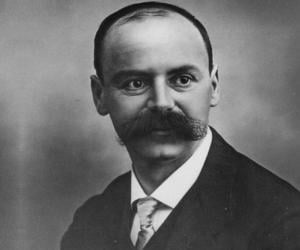
Karl Schwarzschild was a German astronomer and physicist. He is remembered for his contributions to the general theory of relativity; Schwarzschild came up with the first exact solution to the Albert Einstein field equations. He also contributed immensely to the theory of black holes.
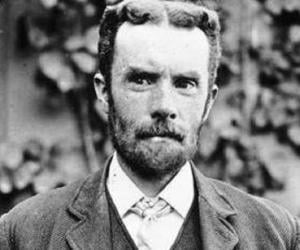
Oliver Heaviside was an English mathematician and physicist. He invented a new technique for solving differential equations and independently developed vector calculus. He is also credited with rewriting Maxwell's equations in the form commonly used today. He formulated the telegrapher’s equations and invented the Heaviside step function as well. In 1922, he received the Faraday Medal.
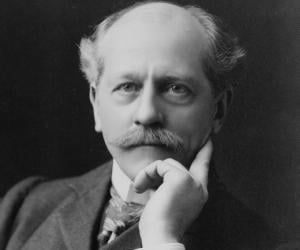
Born into the famous Brahmin Lowell family of Massachusetts, Percival Lowell studied at Harvard, where he excelled in math. He managed a cotton mill and also spent time in Asia as a diplomat. He is best remembered for initiating the discovery of Pluto and for studying the canals on Mars.
Charles Hermite was a French mathematician best remembered for his research on number theory, invariant theory, algebra, elliptic functions, orthogonal polynomials, and quadratic forms. Also an inspiring and influential teacher, Hermite taught Jules Henri Poincaré, who went on to become fa amous mathematician in his own right.
German mathematician Peter Gustav Lejeune Dirichlet is remembered for his invaluable contribution to number theory. He pioneered the concept of a function, expressed through the equation y = f (x). Though his parents wanted him to become a merchant, his mastery of math made them change their minds.
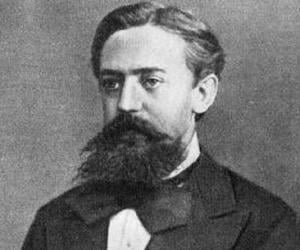
German mathematician Richard Dedekind is best remembered for his ideas on the real number and infinity. Initially interested in subjects such as physics and chemistry, he later deviated to math. He taught at various institutes and was awarded honorary doctorates from universities of Zurich, Oslo, and Braunschweig.
Sir George Stokes, 1st Baronet was an Anglo-Irish physicist and mathematician. He studied at Pembroke College, Cambridge, and spent his entire career at the University of Cambridge as the Lucasian Professor of Mathematics. As a physicist, he made key contributions to fluid mechanics and physical optics. He received the Royal Society's Copley Medal in 1893.
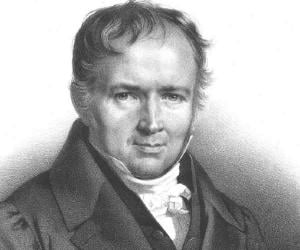
Felix Christian Klein was a German mathematician and educator remembered for his work on complex analysis, group theory, and non-Euclidean geometry. He is also popular for his work on the relationship between group theory and geometry. He is credited with teaching advanced courses to students like Gregorio Ricci-Curbastro, who went on to become a renowned mathematician in his own right.
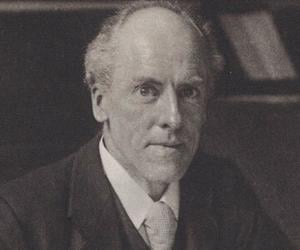
One of the greatest statisticians of all time, Karl Pearson established the first university-level statistics department at UCL and also launched the statistics-oriented journal Biometrika. He was also well-versed in law and believed in eugenics. His The Grammar of Science later inspired Albert Einstein and other scientists.
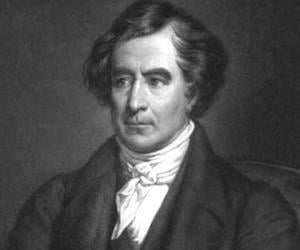
French physicist and mathematician François Arago discovered rotatory magnetism, named Arago's rotations. He is also remembered for his research on the wave theory of light and for the reforms he introduced as the French minister of war and the navy. The Eiffel Tower has his name inscribed on it.
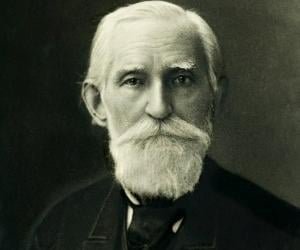
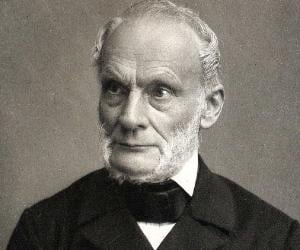
Rudolf Clausius was a German mathematician and physicist. He is credited with formulating the second law of thermodynamics; he is widely regarded as one of the principal founders of the science of thermodynamics. He taught physics at the Artillery and Engineering School in Berlin.
Christian Doppler was an Austrian physicist and mathematician best remembered for describing a phenomenon which came to be known as the Doppler effect. The color of binary stars was explained by Doppler with the help of the Doppler effect. Christian Doppler's discovery of the Doppler effect is considered an important contribution to physics.
